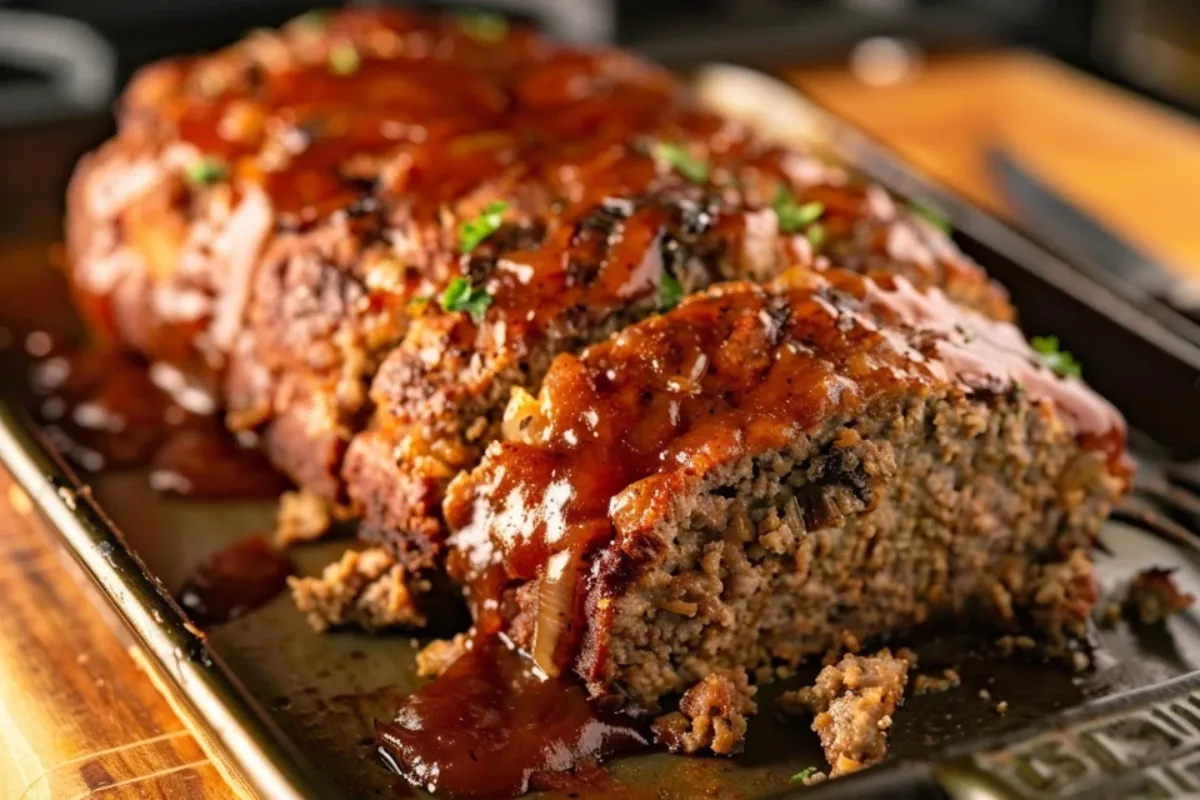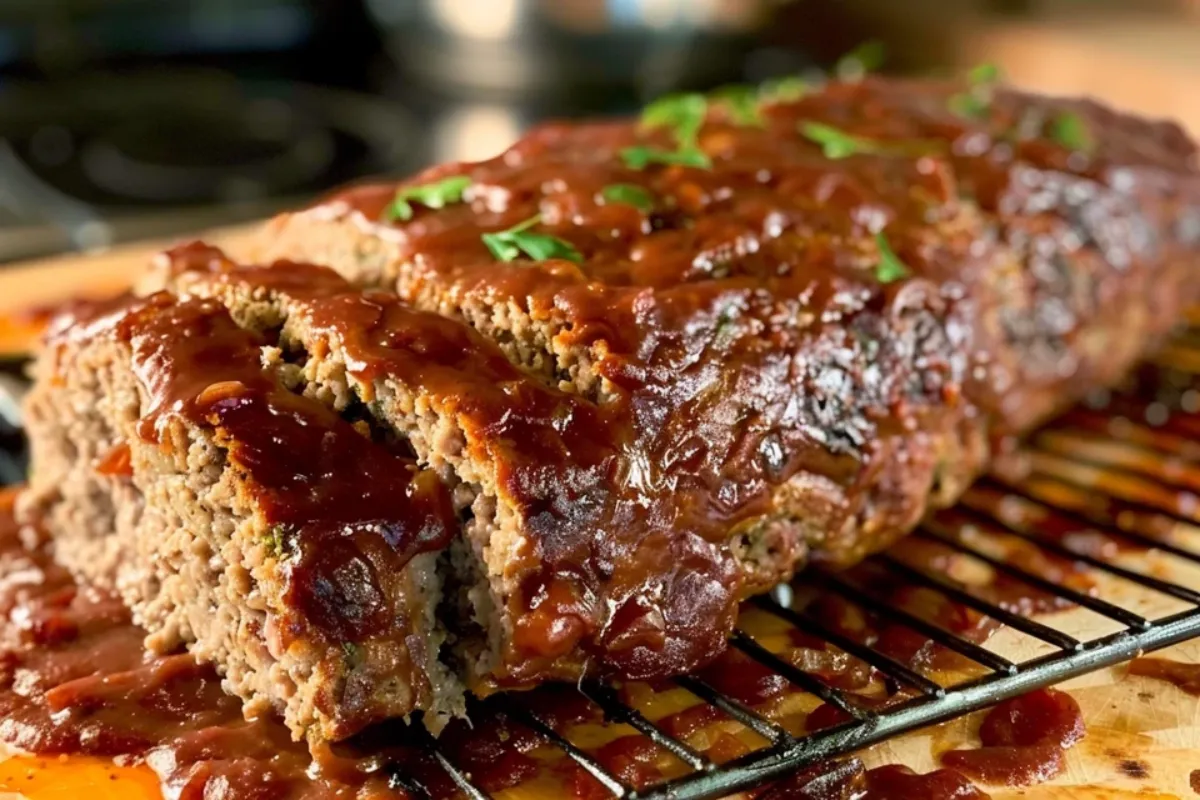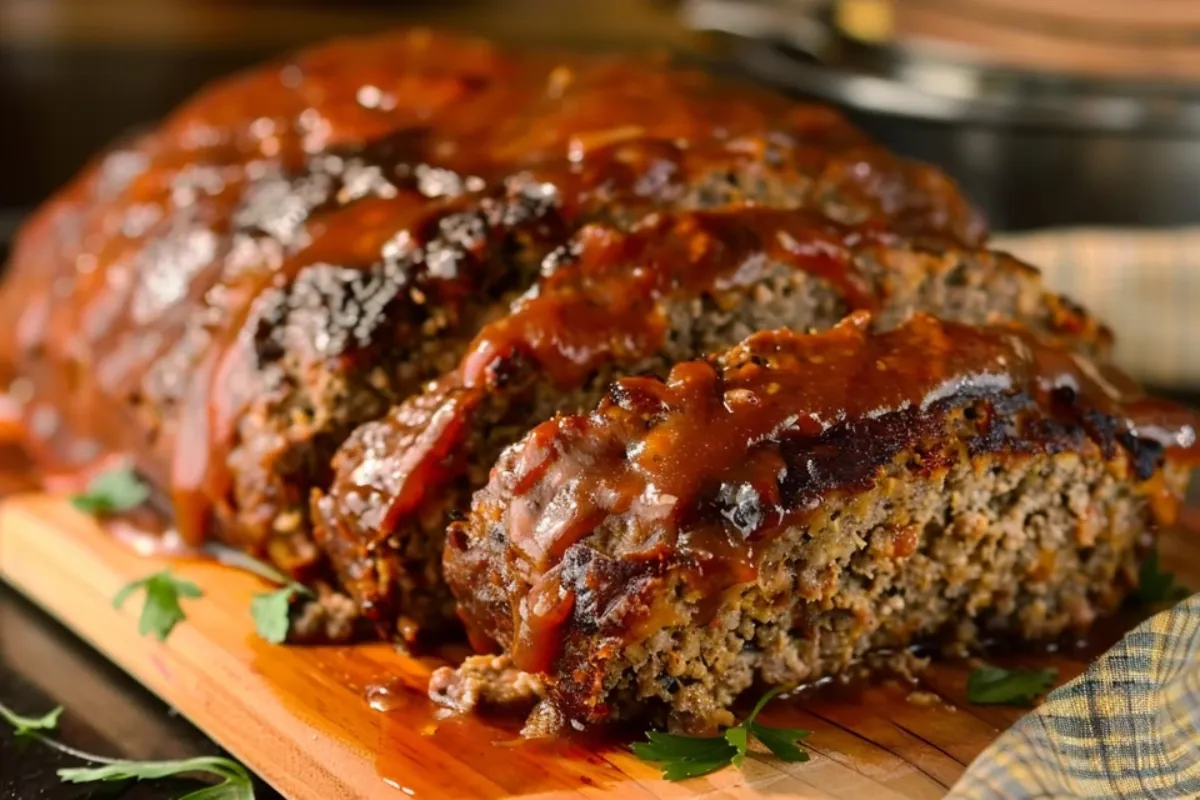This article provides a detailed guide on how to make a perfectly seasoned naturally delicious one pound meatloaf recipe, including baking tips and troubleshooting.
The Perfect One Pound Meatloaf: A Naturally Flavorful Recipe
Making a naturally delicious meatloaf doesn’t have to be complicated. This recipe focuses on a simple, one-pound version, perfect for a small family or individual meal. We will guide you through each step, ensuring a juicy, flavorful result every time. This meatloaf is incredibly easy to prepare and will quickly become a family favorite. Indeed, simplicity often yields the most satisfying dishes. Furthermore, the small size makes it ideal for quick weeknight meals.
Choosing the Best Ground Meat for Natural Flavor
The type of ground meat you use is crucial for the final flavor of your meatloaf. Therefore, consider these options:
-
Ground Beef: This is the most common choice. It offers a rich, beefy flavor. Moreover, an 80/20 blend is ideal for moisture and flavor. This ratio ensures the meatloaf will not be too dry, nor too greasy.
-
Ground Pork: Using some pork can add moisture and depth of flavor to the meatloaf. Additionally, it creates a more tender texture. Ground pork also offers a subtle sweetness that complements beef.
-
Ground Veal: Veal can provide a delicate flavor and tender texture. Furthermore, consider a combination with ground beef for a balanced taste. The subtle flavor of veal also makes it an excellent addition.
-
A Blend: Combining different types of ground meat often results in the best flavor. Therefore, try a mix of beef and pork, or beef, pork, and veal. This allows you to create layers of flavor. Each meat contributes unique qualities.
Essential Ingredients for a Naturally Delicious Meatloaf
The quality of ingredients makes a huge difference in the overall taste. Consequently, let’s explore the core ingredients needed for this one-pound meatloaf:
-
Ground Meat: 1 pound of your chosen blend. The fresher the meat, the better the flavor. Always buy from a reputable source.
-
Breadcrumbs: ½ cup of plain or seasoned breadcrumbs. They help bind the meatloaf and retain moisture. Italian breadcrumbs can add extra flavor, but plain work fine.
-
Milk: ¼ cup of milk or cream. Soaking the breadcrumbs in milk before adding to the mixture makes the meatloaf tender. This helps them absorb the liquid.
-
Egg: 1 large egg, lightly beaten. It also acts as a binding agent. The egg’s proteins coagulate during baking, holding the meatloaf together.
-
Onion: ¼ cup of finely chopped onion. It adds flavor and depth. Be sure to chop the onion finely so it blends evenly.
-
Garlic: 1 clove of minced garlic. For a delicious aroma and flavor. Fresh garlic is always preferred over jarred, for the best aroma and flavor.
-
Seasonings: 1 teaspoon of salt, ½ teaspoon of black pepper, and ½ teaspoon of dried herbs (such as Italian herbs). These are essential for a well-seasoned meatloaf. Adjust seasoning to taste.
-
Ketchup or Tomato Sauce: 2 tablespoons to add tanginess and moisture. It also provides a slightly sweet note.
-
Optional Ingredients: Consider adding chopped parsley, Worcestershire sauce, or a pinch of red pepper flakes. These additions boost flavor even more. A splash of Worcestershire sauce adds umami.
Naturally Preparing the Meatloaf Mixture
Proper mixing is crucial for a tender meatloaf. Therefore, let’s look at the method:
-
Soak the Breadcrumbs: Combine the breadcrumbs and milk in a small bowl. Allow it to soak for about 5 minutes. This step ensures a moist meatloaf. They need time to fully absorb the liquid.
-
Combine the Ingredients: In a large bowl, mix the ground meat, soaked breadcrumbs, beaten egg, chopped onion, minced garlic, and all the seasonings. Use a large bowl to comfortably mix everything.
-
Gently Mix: Use your hands or a spoon to gently mix the ingredients. Be careful not to overmix. Overmixing can make the meatloaf tough. Mix only until just combined.
-
Add the Ketchup: Mix in the ketchup or tomato sauce. Be sure to distribute it evenly. The ketchup also adds another layer of moisture.
-
Form the Meatloaf: Shape the mixture into a loaf. Place it in a baking dish. Additionally, you can use a loaf pan. A loaf pan can create a more uniform shape.
Baking Your Naturally Flavorful Meatloaf
Baking the meatloaf correctly is key to ensuring it cooks evenly and remains juicy. Consider these steps:
-
Preheat the Oven: Preheat your oven to 350°F (175°C). This temperature helps cook the meatloaf through. Ensure your oven is preheated before putting the meatloaf in.
-
Bake Time: Bake for 50-60 minutes, or until the internal temperature reaches 160°F (71°C). Use a meat thermometer to check for doneness. Checking with a thermometer is crucial.
-
Rest: Let the meatloaf rest for 10 minutes before slicing. This allows the juices to redistribute. Consequently, it results in a more tender and flavorful meatloaf. Do not cut into the meatloaf right away.
Ensuring a Naturally Juicy Meatloaf
Achieving a juicy meatloaf is important. Therefore, follow these tips:
-
Don’t Overmix: Overmixing can toughen the meatloaf. Gently combine the ingredients. Mix only until all ingredients are just combined.
-
Use Enough Moisture: The milk and breadcrumb mixture helps keep the meatloaf moist. Also, the ketchup also helps. The milk is especially important for hydration.
-
Avoid Overbaking: Overbaking can dry out the meatloaf. Use a thermometer to make sure it’s cooked through. A thermometer is the most reliable way to avoid overcooking.
-
Let it Rest: Letting the meatloaf rest allows the juices to settle. Therefore, do not skip this step! This resting step is crucial for a juicy meatloaf.
Serving Suggestions for Naturally Delicious Meatloaf
Meatloaf is versatile. It pairs well with a variety of side dishes. Consider the following ideas:
-
Mashed Potatoes: A classic pairing that complements the flavors of meatloaf. Creamy mashed potatoes are a perfect pairing.
-
Roasted Vegetables: Roasted carrots, potatoes, or broccoli are excellent options. They add a healthy touch. The roasted vegetables provide a healthy balance to the richness of the meatloaf.
-
Green Salad: A fresh green salad balances the richness of the meatloaf. A light vinaigrette dressing complements the richness of the meatloaf.
-
Glazed Meatloaf: Add a glaze during the last 15 minutes of baking. Use ketchup, brown sugar, or balsamic vinegar for an extra layer of flavor. A glaze can add a touch of sweetness and visual appeal.
-
Sandwiches: Leftover meatloaf makes delicious sandwiches. Consequently, try it the next day! Meatloaf sandwiches are a classic comfort food.
Troubleshooting Common Meatloaf Problems
Sometimes, meatloaf can present challenges. Therefore, let’s address some typical issues:
-
Dry Meatloaf: This can happen when over-baked. Consider adding more milk to the mixture. Also, do not overcook the meatloaf. Next time, use a meat thermometer to check the internal temp of your meatloaf.
-
Tough Meatloaf: Overmixing the meat can result in a tough texture. Mix the ingredients gently instead. A lighter touch will help keep the meatloaf tender.
-
Meatloaf Falls Apart: This might mean not enough binding agent, like the egg or breadcrumbs. Ensure you are using the correct quantities of each. Double-check your measurements.
-
Bland Meatloaf: Use more seasonings. Consider adding fresh herbs. Indeed, this can enhance flavor significantly. Don’t be afraid to experiment with seasonings.
Variations for Naturally Enhanced Meatloaf
You can easily adapt this recipe. For example, consider the following variations:
-
Spicy Meatloaf: Add red pepper flakes, chili powder, or hot sauce for a spicy kick. Start with a small amount of spice, then adjust to your preference.
-
Cheese Meatloaf: Add shredded cheddar or mozzarella cheese to the mixture or a cheese layer in the center of the meatloaf. This adds a creamy texture and cheesy flavor. The cheese adds both flavor and moisture.
-
Mushroom Meatloaf: Sautéed mushrooms can be added for an earthy flavor and added moisture. Mushrooms add a depth of flavor.
-
Vegetable Meatloaf: Add finely chopped carrots, zucchini, or bell peppers for more nutrients. These vegetables also add a nice pop of color.
-
Gluten-Free Meatloaf: Use gluten-free breadcrumbs or a mix of almond flour and flax meal as a substitute. Gluten-free options make the meatloaf accessible for everyone.
Storage and Reheating of Your Naturally Crafted Meatloaf
Proper storage ensures leftovers remain fresh. Additionally, you can reheat them easily. Consider these guidelines:
-
Refrigerate: Store leftover meatloaf in an airtight container in the refrigerator. It will keep for up to 3-4 days. Make sure to cool the meatloaf before refrigerating.
-
Freeze: Wrap the meatloaf tightly in plastic wrap and then foil. Freeze for up to 3 months. Double wrapping helps prevent freezer burn.
-
Reheat: Reheat in the oven, microwave, or skillet. Add a little liquid (water or broth) if it seems dry. Adding liquid helps prevent the meatloaf from drying out during reheating.
-
Use Leftovers Creatively: Use leftover meatloaf in sandwiches, casseroles, or as a topping for pizza. Leftovers are a wonderful opportunity to make something new.
Naturally Delicious: Final Thoughts on One Pound Meatloaf
This one-pound meatloaf recipe provides a simple yet delicious meal solution. By following these steps, you can make a tender, flavorful, and naturally delicious meatloaf. Experiment with different seasonings and variations to create your own signature dish. You’ll discover that making a great meatloaf is easier than you might think. Therefore, enjoy the process and the resulting meal! It’s a truly satisfying experience. It’s also very budget-friendly! Enjoy the comforting flavors of a homemade meal.
More Tips for a Naturally Superior Meatloaf
Creating the perfect one-pound meatloaf involves a few extra tips that can elevate the dish from good to outstanding. Consider these additional points to make your meatloaf a culinary success:
-
Room Temperature Ingredients: Using room-temperature eggs and milk can help them combine more smoothly with the other ingredients. This ensures a more consistent mixture. Therefore, remove these ingredients from the refrigerator about 30 minutes before starting.
-
Flavor Infusion: For an extra layer of flavor, consider infusing your milk with herbs or garlic. Heat the milk with a sprig of thyme or a crushed garlic clove, then remove before adding it to the breadcrumbs.
-
The Importance of Fat: Don’t be afraid of fat. The fat content in your ground meat helps keep the meatloaf moist and flavorful. Using ground beef with an 80/20 ratio provides an ideal balance of fat and lean.
-
Resting Time is Key: After baking, allowing the meatloaf to rest is not just important, it’s essential. During this time, the internal temperature equalizes, and the juices redistribute throughout the loaf, resulting in a more moist and tender meatloaf. Be patient and resist the temptation to cut it too early.
-
Customization: Meatloaf is highly customizable. Don’t be afraid to experiment with different ingredients based on your preferences. Consider adding sun-dried tomatoes, olives, different types of cheese, or even a bit of finely chopped bacon.
Advanced Techniques for Naturally Delicious Meatloaf
For those looking to go beyond the basics, some advanced techniques can take your meatloaf to the next level. These techniques focus on texture and flavor:
-
The Panade: A panade is a mixture of bread and liquid (usually milk or cream) used to make the meatloaf more tender and juicy. Soaking the breadcrumbs in milk is a simple version of a panade. However, you can also use stale bread soaked in milk, then pureed with an immersion blender for an even smoother texture.
-
Searing the Meatloaf: After shaping the meatloaf, quickly searing it in a hot skillet before baking can help develop a flavorful crust. Briefly sear each side, then transfer it to the oven. This method provides an amazing crust.
-
Internal Temperature Monitoring: Using a digital meat thermometer is the most accurate way to ensure your meatloaf is cooked to the correct internal temperature. Insert the thermometer into the thickest part of the meatloaf. The internal temperature should be 160°F (71°C) to ensure it is fully cooked.
-
Flavor Boosters: Consider adding flavor boosters like sautéed vegetables (onions, carrots, celery), finely chopped anchovies (for a savory note), or a touch of red wine to enhance the overall flavor of the meatloaf.
Frequently Asked Questions About One Pound Meatloaf
How long does it take to bake a 1 lb meatloaf?
A one-pound meatloaf typically takes 50-60 minutes to bake at 350°F (175°C). However, always check the internal temperature with a meat thermometer. It should reach 160°F (71°C) to ensure it is fully cooked. The exact time can vary slightly based on your oven. Consequently, using a thermometer is essential. Monitor your meatloaf carefully, especially during the last 15 minutes of baking.
Is it better to cook meatloaf at 350 or 375?
Cooking meatloaf at 350°F (175°C) is generally recommended. It provides a gentler heat. This helps the meatloaf cook evenly and prevents it from drying out. While 375°F (190°C) will cook it faster, it may increase the risk of a dry or unevenly cooked result. Therefore, 350°F is usually the better choice. Using a lower heat promotes even cooking.
Should you cook meatloaf covered or uncovered?
It’s generally best to cook meatloaf uncovered. Uncovered baking allows the top to develop a nice crust. Covering it can steam the meatloaf, making it less appealing. However, if the top starts to get too brown, loosely cover it with foil for the remaining baking time to prevent it from over-browning. Monitor the top of your meatloaf carefully during the last half of cooking.
What is the secret to juicy meatloaf?
The secret to a juicy meatloaf lies in several key factors. First, do not overmix the meat. Second, add sufficient moisture, such as milk-soaked breadcrumbs. Also, avoid overbaking. Finally, letting the meatloaf rest after baking allows the juices to redistribute. Moreover, these steps ensure a moist and delicious outcome. These steps are all equally important for the success of your recipe.



2 thoughts on “One Pound Meatloaf recipe: Naturally Delicious”